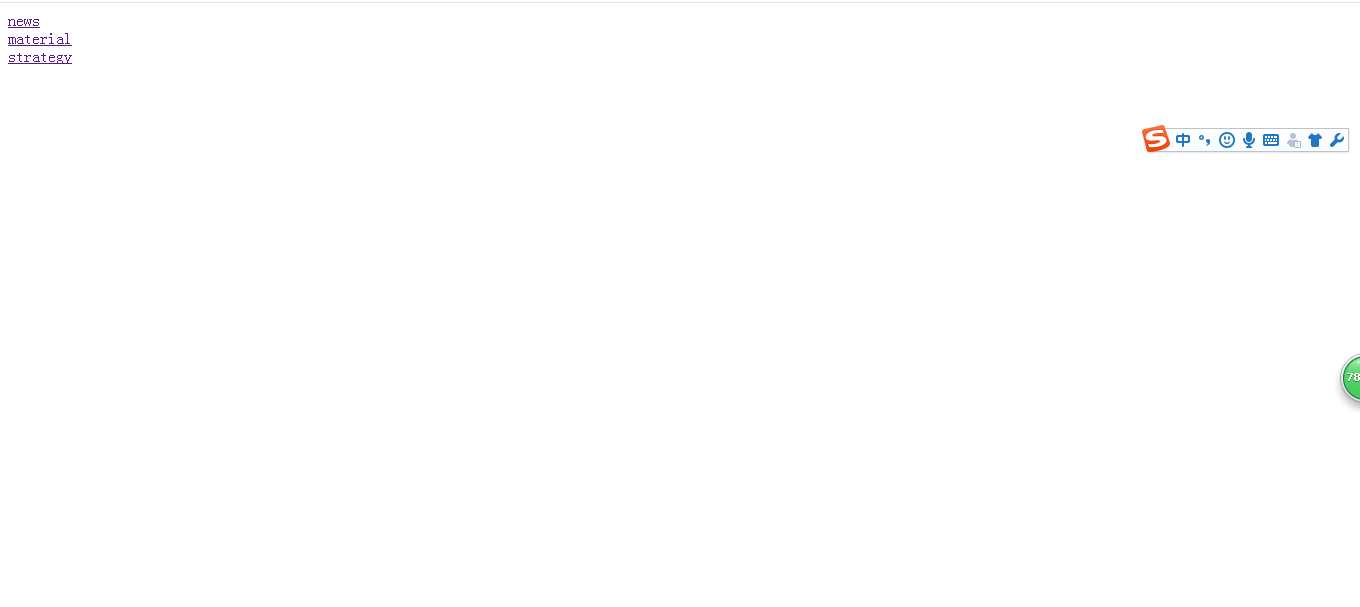这一章,主要讲下vue基于vue-cli 脚手架做项目时遇到的一些问题及解决方案。
首页,vue做多页面的项目,如官网的制作,该怎么配置页面呢?
下面就来讲下,我是如何配置的吧。
首先:先找到 \build\webpack.base.conf.js文件,在代码中找到出现module.exports的地方,可以看到entry
配置如下:
app: ‘./src/main.js‘, // 源文件已有的 news: ‘./src/js/news.js‘, // news、strategy、material都是自己加的,有多少个子页面就加多少个入口 strategy: ‘./src/js/strategy.js‘, material: ‘./src/js/material.js‘
第二步:找到\build\webpack.dev.conf.js文件,在代码中找到module.exports的地方,可以看到plugins
配置如下:
// 源代码已有
new HtmlWebpackPlugin({ filename: ‘index.html‘, template: ‘index.html‘, inject: true, chunks: [‘app‘] }),
// 以下为配置添加,根据子页面进行添加 new HtmlWebpackPlugin({ filename: ‘news.html‘, template: ‘news.html‘, inject: true, chunks: [‘news‘] }), new HtmlWebpackPlugin({ filename: ‘strategy.html‘, template: ‘strategy.html‘, inject: true, chunks: [‘strategy‘] }), new HtmlWebpackPlugin({ filename: ‘material.html‘, template: ‘material.html‘, inject: true, chunks: [‘material‘] }),
第三步:找到/build/webpack.prod.conf.js文件,找到HTMLWebpackPlugin所在的地方
配置如下:
// 源代码已有
new HtmlWebpackPlugin({ filename: process.env.NODE_ENV === ‘testing‘ ? ‘index.html‘ : config.build.index, template: ‘index.html‘, inject: true, minify: { removeComments: true, collapseWhitespace: true, removeAttributeQuotes: true // more options: // https://github.com/kangax/html-minifier#options-quick-reference }, // necessary to consistently work with multiple chunks via CommonsChunkPlugin chunksSortMode: ‘dependency‘, chunks: [‘manifest‘, ‘vendor‘, ‘app‘] }),
// 以下均为自己配置的文件 new HtmlWebpackPlugin({ filename: config.build.news, template: ‘news.html‘, inject: true, minify: { removeComments: true, collapseWhitespace: true, removeAttributeQuotes: true }, chunksSortMode: ‘dependency‘, chunks: [‘manifest‘, ‘vendor‘, ‘news‘] }), new HtmlWebpackPlugin({ filename: config.build.strategy, template: ‘strategy.html‘, inject: true, minify: { removeComments: true, collapseWhitespace: true, removeAttributeQuotes: true }, chunksSortMode: ‘dependency‘, chunks: [‘manifest‘, ‘vendor‘, ‘strategy‘] }), new HtmlWebpackPlugin({ filename: config.build.material, template: ‘material.html‘, inject: true, minify: { removeComments: true, collapseWhitespace: true, removeAttributeQuotes: true }, chunksSortMode: ‘dependency‘, chunks: [‘manifest‘, ‘vendor‘, ‘material‘] }),
第四步:找到\config\index.js文件,并找到build
配置如下:
index: path.resolve(__dirname, ‘../dist/index.html‘), // 源文件已有 news: path.resolve(__dirname, ‘../dist/news.html‘), // 以下均为配置文件 strategy: path.resolve(__dirname, ‘../dist/strategy.html‘), material: path.resolve(__dirname, ‘../dist/material.html‘),
最后需要修改每个页面的xx.js,xx.vue文件,这里以news为例。
news.js
import Vue from ‘vue‘ import news from ‘./news.vue‘ Vue.config.productionTip = false /* eslint-disable no-new */ new Vue({ el: ‘#news‘, render: h => h(news) })
news.vue
<template> <div id="news"> {{msg}} </div> </template> <script> export default { name: ‘news‘, data () { return { msg: ‘I am news‘ } } } </script>
news.html
<!DOCTYPE html> <html> <head> <meta charset="utf-8"> <meta name="viewport" content="width=device-width,initial-scale=1.0"> <title>news</title> </head> <body> <div id="news"></div> <!-- built files will be auto injected --> </body> </html>
最后是主页面app.vue
<template> <div id="app"> <a href="news.html">news</a><br> <a href="material.html">material</a><br> <a href="strategy.html">strategy</a><br> </div> </template>
然后重启 npm run dev
就可以看到如下图界面

这个时候vue多页面配置就大功告成了。
